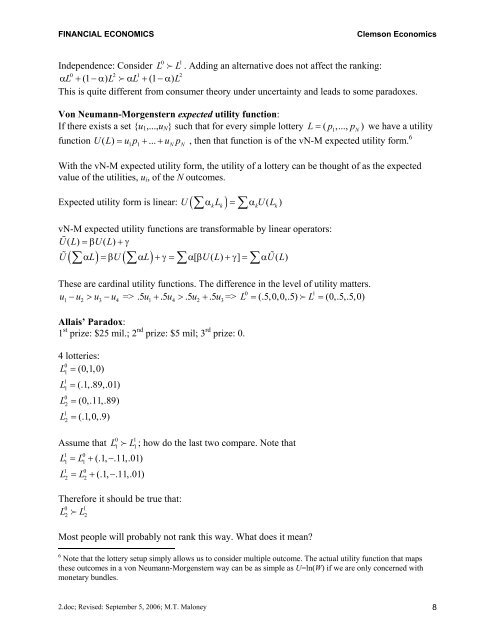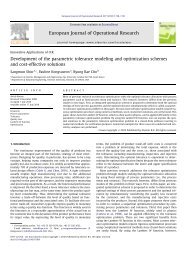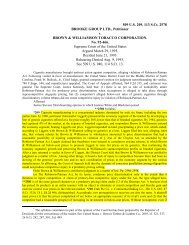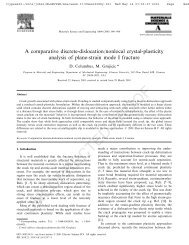Fisher Separation Theorem & Consumer Optimization 1. TWO ...
Fisher Separation Theorem & Consumer Optimization 1. TWO ...
Fisher Separation Theorem & Consumer Optimization 1. TWO ...
You also want an ePaper? Increase the reach of your titles
YUMPU automatically turns print PDFs into web optimized ePapers that Google loves.
FINANCIAL ECONOMICS Clemson Economics<br />
0 1<br />
Independence: Consider L L . Adding an alternative does not affect the ranking:<br />
0 2 1<br />
2<br />
α L + (1 −α) L α L + ( 1 −α)<br />
L<br />
This is quite different from consumer theory under uncertainty and leads to some paradoxes.<br />
Von Neumann-Morgenstern expected utility function:<br />
If there exists a set {u1,...,uN} such that for every simple lottery L= ( p1,..., pN)<br />
we have a utility<br />
function U L , then that function is of the vN-M expected utility form. 6<br />
= u p + + u p<br />
( ) 1 1 ... N N<br />
With the vN-M expected utility form, the utility of a lottery can be thought of as the expected<br />
value of the utilities, ui, of the N outcomes.<br />
Expected utility form is linear: U( ∑α kL k) = ∑αkU(<br />
Lk)<br />
vN-M expected utility functions are transformable by linear operators:<br />
U ( L) =β U( L)<br />
+γ<br />
U α L =βU α L +γ = α β U L +γ = αU<br />
L)<br />
( ∑ ) ( ∑ ) ∑ [ ( ) ] ∑ (<br />
u<br />
These are cardinal utility functions. The difference in the level of utility matters.<br />
u − u > u − u => .5 u + .5 u > .5 u<br />
0 1<br />
+ .5 => L = (.5,0,0,.5) L = (0,.5,.5,0)<br />
1 2 3<br />
4 1 4 2 3<br />
Allais’ Paradox:<br />
1 st prize: $25 mil.; 2 nd prize: $5 mil; 3 rd prize: 0.<br />
4 lotteries:<br />
0<br />
L = (0,1,0)<br />
1<br />
L = (.1,.89,.01)<br />
1<br />
1<br />
L<br />
L<br />
0<br />
2<br />
1<br />
2<br />
= (0,.11,.89)<br />
= (.1,0,.9)<br />
0<br />
Assume that L L ; how do the last two compare. Note that<br />
1 0<br />
1 1<br />
1 0<br />
2 2<br />
1<br />
1<br />
1<br />
L = L + (.1, −.11,.01)<br />
L = L + (.1, −.11,.01)<br />
Therefore it should be true that:<br />
0 1<br />
L L<br />
2 2<br />
Most people will probably not rank this way. What does it mean?<br />
6 Note that the lottery setup simply allows us to consider multiple outcome. The actual utility function that maps<br />
these outcomes in a von Neumann-Morgenstern way can be as simple as U=ln(W) if we are only concerned with<br />
monetary bundles.<br />
2.doc; Revised: September 5, 2006; M.T. Maloney 8
















